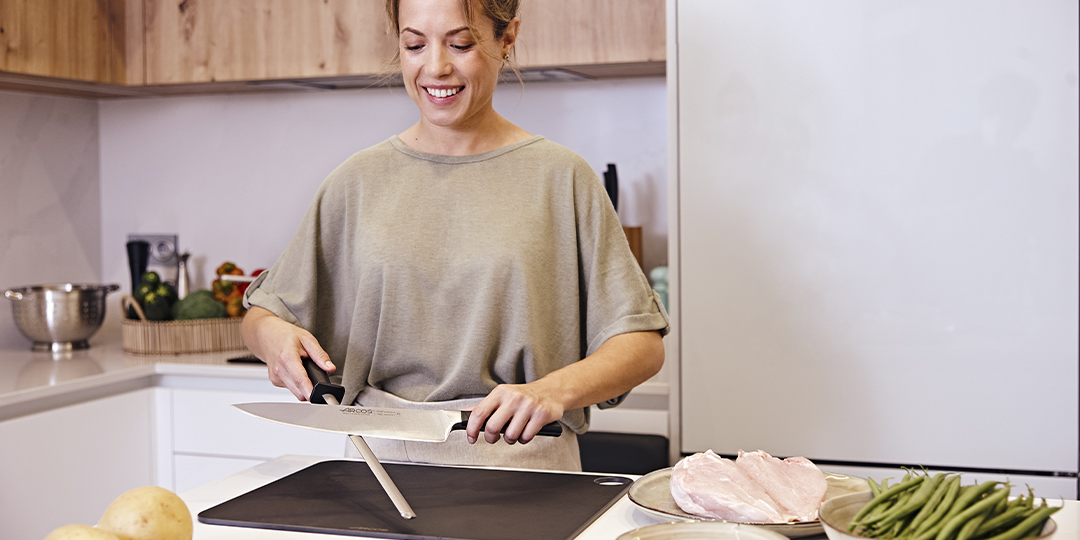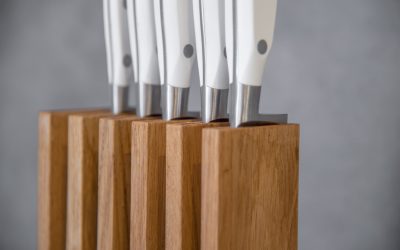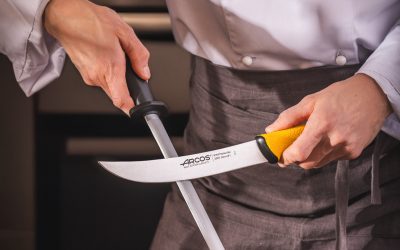How to Hold a Knife Properly
You’ve probably read the headline and thought, “Come on, holding a knife isn’t rocket science,” right? And you’re not wrong it’s pretty simple. But here’s the thing: not everyone does it properly, and that’s what really sets a home cook apart from a proper chef. It’s not just about making neater cuts, either; it’s about staying safe, being precise, and, let’s be honest, making life in the kitchen a hell of a lot easier.
At Arcos, we’ve been making top-quality knives for over two centuries, so trust us when we say, mastering knife skills is key to getting the most out of your cooking. Loads of people have asked about this, so here’s our honest, no-nonsense guide to handling a kitchen knife like an absolute pro. After this, you’ll be holding a chef’s knife like you were born for it. Let our experts walk you through it your chopping game’s about to level up.
Why Getting Your Knife Grip Right Matters
Holding a knife wrong can turn a dead easy recipe into a right faff and sometimes even a bit dangerous. If you’re not gripping the handle properly, you’ll lose control, make things twice as hard, and up your chances of getting a nasty nick.
On the flip side, the right grip means you keep things steady, your hand and arm don’t ache as much, and you nail those accurate, confident slices. You’ll also save your joints a load of hassle handy if you’re always in the kitchen.
So before you worry about fancy knife techniques, get comfy with the basics: how to hold it like a chef.

Step-By-Step: How to Hold a Kitchen Knife
You’ve probably seen all sorts of gripping styles on the internet. But to keep things simple, the “pinch grip” is the one proper chefs swear by. Here’s how you do it:
- Place your index finger and thumb either side of the blade, just where it meets the handle.
- Give the blade a gentle pinch no need to squeeze the life out of it.
- The rest of your fingers should wrap naturally round the handle nice and relaxed, not a death grip.
- Keep your wrist straight and your arm in line with the chopping board.
Easy, right? These few steps give you the best balance between power and control so your cuts come out cleaner, safer and way more even.
Top tip: Never grip a knife like you’re holding a hammer it’ll wreck your accuracy and could even lead to dodgy slips. Trust us, we’ve seen it all.
Knifework Like the Pros
Once you’ve nailed the grip, the next step is mastering the cut itself. Don’t just force the knife straight down let the blade do the work with a fluid, rocking motion.
If you’re slicing veg or herbs, rock the blade back and forth, keeping the tip of the knife on the board. When it comes to meat or fish, use longer, smoother strokes and let that sharp edge glide. With fruit or smaller stuff, get right up close, curl your fingers on the “guiding hand” into a claw, and keep those knuckles forward to protect your fingertips.
It’s all about teamwork between both hands the one on the knife and the one steadying your food.
Which Knife, Which Grip?
Heads up not every knife is handled the same way. The size, weight, and shape can change things up.
The classic chef’s knife is the first one to learn with, and the pinch grip is perfect. For peelers, hold them like a pencil, pinching near the blade for control. Slicing knives or ham knives? Use a firm but not forceful grip. Japanese knives? Straight up-and-down slices, no fancy back-and-forth.
Tips for Staying Safe
Safety in the kitchen starts right here. Keep your knives sharp, dry, and properly stored. Don’t get distracted when you’re chopping, and never leave knives hanging off the counter’s edge—no one wants a footful of stainless steel.
Follow these tips and you’ll soon have the confidence to handle any knife especially an Arcos like a seasoned pro.

